#More than Miyagi: the Pat Morita Story
Explore tagged Tumblr posts
Text

#Ralph Macchio#Pat Morita#Daniel LaRusso#Mr. Miyagi#The Karate Kid#More than Miyagi: the Pat Morita Story#I never saw this posted before‚ so here you go Karate Kid community (crying)#Miyagi-horiginal
242 notes
·
View notes
Text
The Karate Kid (1984)

Before today, I had never seen The Karate Kid. I assumed the love directed towards it came from nostalgia and the film being released at the right time, in the right environment. I couldn’t have been more wrong. This is a sweet, surprisingly deep crowd-pleaser with many memorable scenes to go with its iconic characters and great performances.
In 1984, Daniel LaRusso (Ralph Macchio) and his mother (Randee Heller) move from Newark to Los Angeles. After befriending Ali Mills (Elisabeth Shue), Daniel is beaten by her jealous ex-boyfriend, a karate black belt named Johnny (Billy Zabka). Taking pity upon Daniel is Mr. Miyagi (Noriyuki “Pat” Morita), who senses that Johnny and his gang’s bad behavior stems from their instruction at the Cobra Kai Karate club.
Like John G. Avildsen’s Rocky, The Karate Kid shows relatively little of its sport but makes you care for it more than you thought was possible by betting its chips on the characters. It’s impossible not to relate to Daniel. Bright and good-natured but filled with self-doubt thanks to his lower-class status and inability to stand up to the Cobra Kais, you desperately want things to work out for him. You want him to develop the karate skills necessary to defend himself. More importantly, you want Daniel to become confident enough for him and Ali to become an item. It helps that Ralph Macchio and Elisabeth Shue have terrific chemistry. Whenever something threatens to keep them apart - be it Ali’s snooty parents, Johnny, normal teenage drama or Daniel’s insecurities - your emotions swell.
If you weren’t already invested, you hate the Cobra Kais so much you keep watching, hoping they'll get their (hopefully violent) comeuppance. This is where Mr. Miyagi comes in. He could’ve easily been a stereotype or a one-dimensional supporting character; an excuse to get the plot going. Instead, he’s a fully realized person with a unique brand of humor and wisdom. It’s hard to choose if the film’s best scenes are the tender dates and heartfelt talks between Daniel and Ali, or the training sequences with Daniel and Miyagi. The latter contain big laughs, a touching father-son-like relationship and unexpected depth.
Behind Daniel and Johnny, we have two very different teachers. The second we walk into the Cobra Kai club, we see photos of John Kreese (Martin Kove) proudly showing off his military career and belting out his mantra that mercy is for the weak, that the point of karate is to brutally crush your opponent. He cares nothing for his students and has only contempt for kind Mr. Miyagi. By contrast, the humble Okinawan immigrant does not flaunt his martial arts skills or military career. He comes to offer his services to Daniel because he wants to teach the boy self-defense. To Miyagi, karate is an extension of everyday life. He teaches the sport by putting Daniel in real-life places and situations that incorporate the moves his pupil needs to practice. Karate is a naturally occurring process, whereas Kreese hammers the idea of violence into his students. The brutality he forces into their lives manifests as aggression and they become twisted; violent. The methods of instruction couldn’t be more different.
The Karate Kid has a lot to offer. The soundtrack is terrific. The story takes you through a full gamut of emotions - everything from heartbreaks to laugh-out-loud laughs, the joys of first love, the tears of joy from a perfect birthday gift and the exhilaration of a competition whose final match might as well symbolize the triumph of good over evil. The performances are uniformly strong. The screenplay is thoughtful. The characters are unforgettable. It’s no wonder if popularized karate in North America. This is no mere “right time, right place” movie. It has lasting power and will delight audiences for generations. (September 10, 2021)

#The Karate Kid#movies#films#movie reviews#film reviews#John G. Avildsen#Robert Mark Kamen#Ralph Macchio#Noriyuki “Pat” Morita#Elisabeth Shue#William Zabka#Martin Kove#Randee Heller#1984 movies#1984 films
4 notes
·
View notes
Video
youtube
»Morita’s legacy continues to live on in Netflix’s uber-popular hit Cobra Kai. He broke countless barriers throughout his storied career and impacted so many lives along the way. Admittedly, I don’t know much about the actor beyond his role in The Karate Kid films, so I’m excited to learn more about him.» [geekgirlauthority.com]
Ser avgjort ut att kunna vara en bra och intressant dokumentär. Som GGA noterar har man inte så mycket koll på mannen bakom myten. Går inte att bevaka på vodeville eller playpilot än, så jag slänger in i en lista på IMDb.
Länkar.
📼 @ IMDb.com.
📼 @ DuckDuckGo.com.
#more than miyagi: the pat morita story#Pat Morita#karate kid#cobra kai#film#movie#dokumentär#documentary
6 notes
·
View notes
Text
MORE THAN MIYAGI: THE PAT MORITA STORY review - Wax on or wax off, this documentary will clean house and shed some tears
Coming out this Friday is the MORE THAN MIYAGI: THE PAT MORITA STORY (@morethanmiyagi). @RPGIntertain has seen it and in his review he says "it was a fantastic history lesson on a great actor that will always be remembered for “waxing on and waxing off”."
Title: MORE THAN MIYAGI: THE PAT MORITA STORYDirector: Kevin DerekFeaturing: Ralph Macchio, William Zabka, Martin Kove, Henry Winkler, James Hong, Sean Kanan, Marion Ross, Esai Morales, Tommy Chong, Don Most, Anson Williams, and more. Movie length: 1 hours 29 minutes What a wonderful and somewhat tragic look into the life of film icon Pat Morita. Most people know Morita for his role as Mr.…

View On WordPress
#Don Most#Esai Morales#Henry Winkler#James Hong#Marion Ross#Martin Kove#MORE THAN MIYAGI: THE PAT MORITA STORY#movie reviews#Pat Morita#Ralph Macchio#Richard Hill#Sean Kanan#Tommy Chong#William Zabka
2 notes
·
View notes
Text
More Than Miyagi: The Pat Morita Story (2021) - Film Review
More Than Miyagi: The Pat Morita Story is a sentimental yet sobering look at the life of a legend. Read our review here...
The name Mr Miyagi is no doubt more famous to most folks than the name Pat Morita. This documentary arrived with an accompanying sense of ‘risk vs reward’ in addressing the iconic actor, best known for The Karate Kid. On the one hand, it humanises its subject but on the other hand it has the potential to forever shatter the image of Morita, especially as he had his demons. More Than Miyagi: The…

View On WordPress
#documentary#film review#henry winkler#martin kove#More Than Miyagi: The Pat Morita Story#Pat Morita#The Karate Kid#William Zabka
1 note
·
View note
Photo

More Than Miyagi: The Pat Morita Story Review: A Fascinating Retrospective of an American Icon
Noriyuki 'Pat' Morita became a legend in The Karate Kid, More Than Miyagi pulls back the curtain on his groundbreaking life and career.
https://movieweb.com/more-than-miyagi-the-pat-morita-story-review/
0 notes
Photo


0 notes
Text
More Than Miyagi: The Pat Morita Story | Trailer
More Than Miyagi: The Pat Morita Story | Trailer
Mr. Miyagi is the character that made him an icon, now we examine this OSCAR nominated actor who brought him to life.
youtube
View On WordPress
0 notes
Text
Póster Oficial: More Than Miyagi... The Pat Morita Story
Póster Oficial: More Than Miyagi… The Pat Morita Story

View On WordPress
0 notes
Text
Watch This Trailer For MORE THAN MIYAGI: THE PAT MORITA STORY
Watch This Trailer For MORE THAN MIYAGI: THE PAT MORITA STORY
Check out this trailer for MORE THAN MIYAGI: THE PAT MORITA STORY documentary which arrives FEBRUARY 5, 2021 The Oscar-nominated actor best known for his role of “Mr. Miyagi,” left behind a painfully revealing autobiographical record of his much-too-brief time here on Earth, tracing his journey from being bed-bound as a boy to the bright lights and discrimination in Hollywood. Deep inside that…

View On WordPress
0 notes
Text
William Zabka about Pat Morita's idea for a fourth Karate Kid in More than Miyagi: The Pat Morita Story (2021)
#Pat Morita#William Zabka#Mr. Miyagi#The Karate Kid#More than Miyagi: The Pat Morita Story#Video#Miyagi-horiginal#I'M SO CURIOUS WHAT WOULD HAVE HAPPENED IF THIS IDEA WAS PASSED#Johnny Lawrence as a doctor...#A proper Okinawan burial 😭😭😭😭
101 notes
·
View notes
Text
The Karate Kid (2010)

Remakes of good movies are stuck in an impossible place. You can’t make them the same as the movie that inspired them because then, what’s the point? You also can’t deviate too much from the source material because then audiences will be disappointed. Ideally, you’d update movies that squandered their potential or no longer hold up, but that doesn't happen. This brings us to the 2010 version of The Karate Kid. If this was a standalone movie, it wouldn’t be so bad. Jaden Smith is a compelling lead and he has great chemistry with Jackie Chan. The problem is that it is not a standalone movie and since it is nowhere near as good as the 1984 film, it struggles to validate its existence.
12-year-old Dre Parker (Jaden Smith) and his widowed mother (Taraji P. Henson) have just moved from Detroit to China. Bad enough that he doesn’t speak any Mandarin but Dre is also bullied relentlessly by a 14-year-old named Cheng (Zhenwei Wang) and his gang. Under the training of the most unlikely of teachers - the apartment building’s maintenance man, Mr. Han (Jackie Chan) - Dre learns to defend himself.
I’ll begin with the things this picture does well. This Karate Kid was partially green-lit as a vehicle for Jaden Smith and he shows a lot of promise. He handles the stunts and the many dramatic scenes well. He’s got presence and personality. The film gives you ample reason to sympathize with him but it still wouldn’t have been effective if he wasn’t able to deliver his lines convincingly. I also want to call out the fight choreography, with one featuring Chan confronting Cheng’s gang without actually laying a hand on them being one of the highlights. This film is based on a strong foundation with heroes you love to cheer for and some big emotional payoffs. It’s easy to watch and doesn’t feel excessively long despite the 2-hour, 20-minute running time.
The fact that it is mostly good is what makes its flaws that much more frustrating. The picture may not feel long but it's still longer than the original (which clocked in at two hours and seven minutes) and somehow, the characters feel less developed. Part of the reason is the age difference. All of the characters in the '84 story were at least 17. The kids in this movie? They’re kids. Dre isn’t even a teenager and he’s having this budding romance with a girl in his class, Meiying (Wenwen Han). Where is that supposed to go? Precisely nowhere, you know that. Similarly, those bullies Dre is always running away from might be intimidating to him, but they’re small children. Even Dre’s mom could pick them up from the scruff of their neck and toss them around. They're non-threats even if you don’t compare them to the members of Cobra Kai, which were essentially grown men who could do real damage and felt dangerous, particularly against Pat Morita, who looked like a gentle grandfather - unlike Chan, who looks damn spry.
Gone is most of the humor. Miyagi - sorry, Han - is now an entirely serious, occasionally tragic character. You still believe Dre and Mr. Han as friends, but it just isn’t the same and the amount of time they spend together, combined with the violence Dre suffers at the hands of the bullies makes his mother seem irresponsible. I know circumstances were tough but she dragged her son to a country whose language he doesn’t speak and didn’t even prepare him for basic things like how to dress on his first day of class.
The problems go on from there, right up to the conclusion. Cheng is the pupil of Mr. Han’s rival, a brutal teacher named Master Li (Yu Rongguang). This man has hundreds of students, all of whom we must assume are as cruel as Cheng and his cronies. Even if Dre wins the big tournament at the end of the movie, it isn’t going to mean anything.
You may disagree with all of these criticisms but here's something undeniable: this is a remake of The Karate Kid that features no karate. They could’ve called it ANYTHING else but they didn’t call it “The Kung Fu Kid”; they called it The Karate Kid. All so Jaden Smith could have a spotlight on him, and so we could get some not-so-subtle glamour shots of what China has to offer to Western visitors. Apparently, the Great Wall is the place to go if you want a training montage. This film certainly wasn’t for Chinese audiences, who must've looked at the trailers and thought “Why are we supposed to cheer for some outsider coming to our country?” I won’t call 2010's The Karate Kid a bad movie, but it’s so unnecessary I could never recommend it to anyone. (American Cut, March 11, 2022)

#The Karate Kid#movies#films#movie reviews#film reviews#Harald Zwart#Christopher Murphey#Jaden Smith#Jackie Chan#Taraji O. Henson#2010 movies#2010 films
0 notes
Text
Top 10 Greatest Shows From Nickelodeon’s SNICK
Since I’ve done so many lists on Disney, I thought I should do a throwback list on Nickelodeon. SNICK was Nickelodeon’s Saturday prime time lineup during the 90’s and 00’s. It aired every Saturday night.
Many different shows aired throughout its run, but these ten were the best.
10. KaBlam!

KaBlam! was a sketch comedy cartoon show created specifically for SNICK. It featured a variety of cartoon sketches including Action League Now, Life With Loopy, Prometheus and Bob, and many more. Many of the cartoons used alternative animation commonly used in indie films, such as stop motion animation and cutout photo animation. The humor was definitely on the darker side, as was most of Nickelodeon’s cartoons at the time.
9. Space Cases

Space Cases was a kids version of Star Trek and Lost in Space. It featured a kid crew who sneak aboard a ship and get lost in space. Some of the kids were aliens with special powers, like super strength and hearing, electricity blasts, and a supersonic scream. It featured Walter Jones (the Black Power Ranger) and Jewel Staite (Kaylee from Firefly). It was definitely cheesy but a fun show with a little bit of suspense thrown in.
8. Clarissa Explains It All
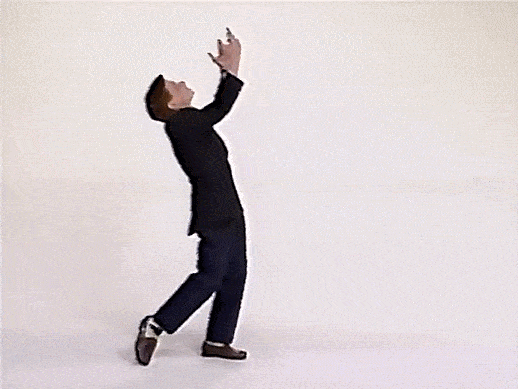
Na na na na! This show follows Clarissa as she explains everything in her life directly to the viewers. She has a rivalry with her younger brother Ferguson. Every day she gets a visit from her best friend Sam, who climbs through her bedroom window using a ladder. Clarissa Explains It All was Nick’s first show with a female lead. It’s success paved the way for many more to come.
7. GUTS

Before American Ninja Warrior, there was Nickelodeon GUTS. Hosted by Mike O’Malley, each episode featured three kids running through various obstacle courses. Each episode ended with all three climbing The Crag, a rock climbing fixture with various buttons the competitors had to push to earn points. The one with the most points who reached the top first won the episode. It was lots of fun.
6. Are You Afraid of the Dark?
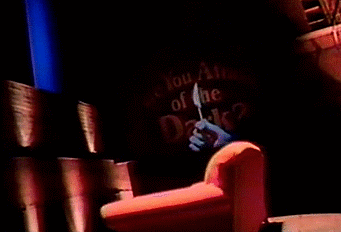
A bunch of kids gathered around a campfire telling scary stories was a concept behind Are You Afraid of the Dark? Each episode featured a different spooky tale. Some of them were more silly than scary. But some were legitimately creepy.
5. Animorphs

Based on the popular book series, Animorphs was about a group of teenagers given the power to morph into animals to fight invading aliens. It was a combination of The X-Files, Power Rangers, and National Geographic. It was darker and more suspenseful than other Nickelodeon shows. Unfortunately, it was limited by the technology of the time and lasted only two seasons. A real shame as the books were fantastic.
4. The Mystery Files of Shelby Woo
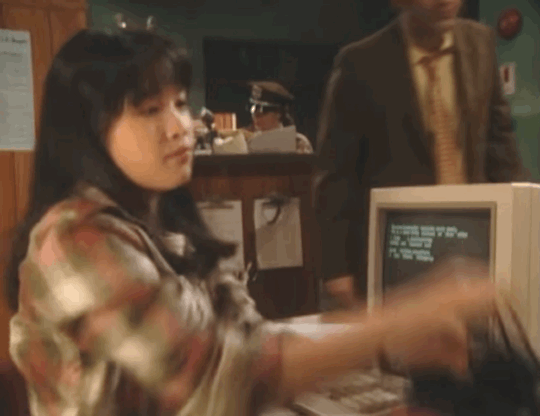
The Mystery Files of Shelby Woo was a great show ahead of its time. It was about a teenage girl who interns at a police station. She can’t help but try to solve the mysteries that come in. The show follows her as she finds clues, suspects, and allows the viewer to try to solve the case along with Shelby Woo. It was a rare gem that featured an Asian American actress in the lead role. Mr. Miyagi Pat Morita also starred as Shelby’s grandfather.
3. The Secret World of Alex Mack
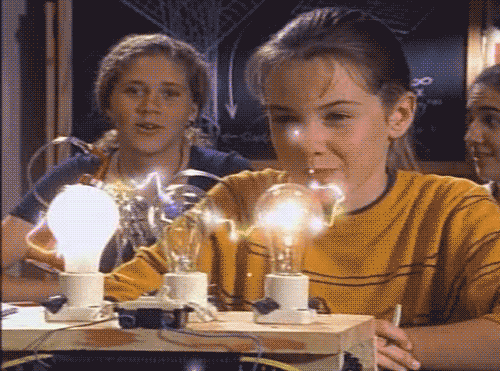
The Secret World of Alex Mack was about a junior high school teen who was accidentally covered in a mysterious chemical. That chemical gave her special abilities to shoot electricity from her fingers, telekinesis, and to turn into a puddle of water. It sounds really weird, but it was a really good show. It featured Jessica Alba in one of her first roles as a mean girl at Alex’s school.
2. Kenan & Kel
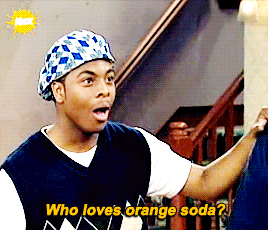
Kenan & Kel was a spinoff series starring All That stars Kenan Thompson and Kel Mitchell as best friends. Kenan was the schemer who came up with crazy ways to get rich, and Kel was his goofy best friend roped into every terrible plan. Of course, chaos and hilarity always followed. It’s running gags were Kel’s undeniable love for orange soda and ending each episode with “Aww here it goes!”
1. All That
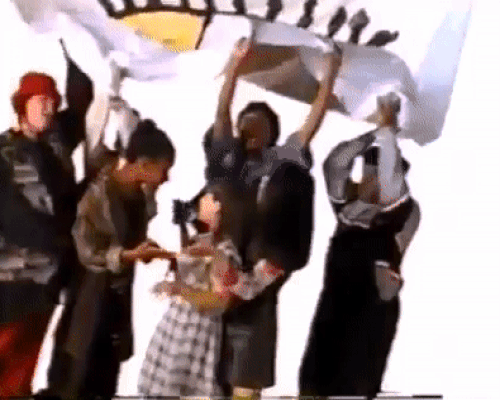
All That will always be the greatest Nickelodeon show. It was a sketch comedy show for kids, starring kids. It was gut busting funny. The writing was really smart and the kids were crazy talented. It launched the careers of Kenan Thompson, Amanda Bynes, Nick Cannon, and Gabriel Iglesias. But the first two seasons and the original cast will always be the best. It featured spoofs of Oprah, Ross Perot, Superman, Steve Urkel, and more. Its best segments were Good Burger, Ear Boy, the Loud Librarian, and Vital Information. It was so successful it launched spinoff series Kenan & Kel, The Amanda Show, and Good Burger became its own feature film released in theaters.
#90s nostalgia#90s throwback#90s#nickelodeon#snick#all that#kenan and kel#the mystery files of Shelby woo#the secret world of Alex Mack#alex mack#Nickelodeon guts#clarissa explains it all#animorphs#are you afraid of the dark#kablam!#space cases
50 notes
·
View notes
Text
The Karate Kid: The Real Martial Arts History Behind the Movies
https://ift.tt/3jFNaYg
When it comes to martial arts films, The Karate Kid was a game changer when it came out in 1984. Its lasting cultural impact was a landmark advancement for the western understanding of the martial arts. But was it a genuine representation of Karate?
Den of Geek consulted Dr. Hermann Bayer, an expert authority on Okinawan Karate and the author of the upcoming book Analysis of Genuine Karate―Misconceptions, Origin, Development, and True Purpose. Dr. Bayer remembers firsthand how The Karate Kid stimulated the Karate boom in the mid-eighties because he was a practicing Karateka then. But as a martial scholar, he’s pragmatic about his opinions.
“First and foremost, we have to bear in mind that we are talking about a movie, not about a documentation or a piece of research,” says Bayer. “This means that we need to concede that fascinating viewers by something pretty, amazing, or spectacular to look at is more important than authenticity.”
The Year That The Karate Kid Premiered
When we reflect upon the original, we must remind ourselves that the landscape of martial arts films in the west was vastly different in 1984. There just weren’t that many martial arts movies in western pop culture back then.
Bruce Lee’s Enter the Dragon came out over a decade before The Karate Kid, and tragically, Lee didn’t live to see it succeed. Many B-movies coat-tailed on Enter the Dragon‘s success, especially in the subgenres of Bruceploitation and Blaxploitation. This comprised the bulk of martial arts for western audiences. Beyond the imported niches of Hong Kong Kung Fu and Japanese samurai movies, there just weren’t that many other martial arts films available. And those were limited to showings in second- and third-run theaters or midnight “Kung Fu Theater” TV broadcasts. Consequently, the genre was considered low-brow entertainment with minimal impact on the box office.
When The Karate Kid debuted, most of today’s martial arts superstars had no Hollywood presence. Despite starring in dozens of Hong Kong films, Jackie Chan had only led one Hollywood production by that point. That was Battle Creek Brawl, made by the same filmmakers who did Enter the Dragon, however it under-performed and was deemed a failure. His other Hollywood credits in 1984 included a cameo in the sequel ensemble comedy The Cannonball Run II. With only three minor Hollywood appearances, he was still virtually unknown to the Western audience.
Chuck Norris was more prominent having starred in more than a half dozen B-action flicks by then. His 1984 entry was Missing in Action in which Jean-Claude Van Damme had an uncredited role. JCVD didn’t grab any limelight until four years after The Karate Kid, when he starred in his breakout lead role for Bloodsport. Jet Li was only on his second film that year, Kids From Shaolin, but that wasn’t shown outside of Chinatowns in the U.S. It would be another 14 years after The Karate Kid before Jet made his first Hollywood appearance as the villain in Lethal Weapon 4.
The Karate Kid changed the way martial arts films were perceived. It demonstrated that the martial arts genre could deliver wholesome family entertainment, as well as good box office returns. It ranked fifth among the highest grossing films of 1984, behind Beverly Hills Cop, Ghostbusters, Indiana Jones and the Temple of Doom, and Gremlins. The Karate Kid was the sleeper hit of the year, and it made Daniel LaRusso (Ralph Macchio) and Mr. Miyagi (Pat Morita) into crane-kicking icons.
The Limitations of the Karate Kid Trilogy
The Karate Kid was a Hollywood adaptation of a common plot device of Kung Fu movies – the training trope. Many of Jackie Chan’s late seventies films were “martial training” stories. Those narratives can be distilled down to three acts as seen in The Karate Kid: the hero suffers an injustice — like the murder of his family (or in Daniel’s case, just getting bullied) — then the hero finds a quirky master who uses obscure, almost non-nonsensical training methods, and finally the hero, armed with these hard-earned skills, takes revenge.
Jackie’s groundbreaking 1978 Snake in the Eagle’s Shadow is a perfect example of this. That was a turning point for Jackie, the launch of his unique style of comedy Kung Fu, back when he was in his physical prime. In that same year, the Kung Fu grindhouse Shaw Brothers studios delivered the timeless classic film The 36th Chamber of Shaolin, which is a perfect example of the same formula. “Martial training” stories are even retold in animated films like Mulan and Kung Fu Panda. The Karate Kid just had the ingenuity to set it at West Valley High School in San Fernando, California.
Today, Daniel-san is enjoying a revitalization through Netflix’s hit series Cobra Kai. Packed with more easter eggs that an April bunny basket, Cobra Kai has been rectifying flaws from the original films with a subtle, yet effective elegance. Despite its time-honored success, the original films fell under tremendous scrutiny from genuine Karatekas who were quick to point out inaccuracies. Frankly, for such a flagship film of the martial arts genre, the martial arts weren’t that good. The main cast of the original film had little or no martial arts background. Kreese (Martin Kove) was the only cast member who studied Karate prior to the films.
Part of this adds to the charm. Despite being the All Valley Karate Champ twice in a row, Daniel is a newbie to the art. In fact, the original trilogy happens in a little over a year. The Karate Kid takes place in 1984. The Karate Kid III, despite premiering in 1989, depicts events at the following All Valley Karate Championships. Daniel goes from zero to hero in an alarmingly short time.
How could Daniel genuinely master Karate with so little training time? Is “wax on, wax off” deck sanding and fence painting truly that effective? Of course not. If it were, the MMA cage would be dominated by car washers, carpenters, and house painters. That’s the magic of movies. Movie martial arts are no more realistic than movie car chases.
This still begs the question – how much of Miyagi’s weird training really works?
“Whole floor. Right circle, left circle.”
Traditional martial arts training can take many forms, and the spirit of Mr. Miyagi’s esoteric lessons isn’t too far off the mark. Although few practitioners today carry water up mountains like the Shaolin monks, mundane chores like cleaning and repairing are still implemented in training within a traditional Dojo. Frankly, the repetitive nature of martial arts practice is boring so any way to invigorate enthusiasm is welcome. And the efficiency of multi-tasking is always appreciated, even in modern strip mall Dojos.
A common training ritual is cleaning the floor before class. This is extremely important because most Dojos practice barefoot. Many old school Dojos require that students push damp rags across the floor with their hands in a low crouch. As anyone who has done it knows, this is harder than it looks and serves as an excellent warm-up exercise. When the Dojo needs repairs, students pitch in where they can because a good Dojo fosters community that way, and variations on training emerge within those tasks akin to Miyagi’s painting and sanding. And if there’s a Dojo fundraising carwash, you know there will be plenty of “wax on, wax off” practice.
But beyond the waxing, sanding, and painting, how real is Miyagi-Do?
“Only root Karate come from Miyagi.”
There are two styles of martial arts represented in The Karate Kid, Okinawan Karate and Korean Tang Soo Do. Kreese’s Karate is Tang Soo Do mostly because the choreographer for the original films was Grandmaster Pat E. Johnson, a leading proponent of that style. Although most likely the product of coincidence, it fit Kreese’s character perfectly. Many U.S. soldiers who served in Korea brought Tang Soo Do back to the states when they returned, just like Kreese, including Johnson and his martial comrade, Chuck Norris.
In Season 3 of Cobra Kai, Kreese’s backstory confirms what martial arts fans have always suspected – that his style of Karate is in fact, Tang Soo Do. Calling it “Karate” was not inaccurate. Few Americans know Tang Soo Do, so even today, some schools market themselves as “Korean Karate.” Tang Soo Do is a predecessor of Taekwondo. Taekwondo is the other Asian martial art in the Olympics alongside Judo, but this is soon to change.
Read more
TV
Cobra Kai Season 4: What to Expect
By Gene Ching
TV
Cobra Kai and the Debate Around Cultural Appropriation
By Gene Ching
Miyagi-Do is derived from a branch of Karate known as of Goju-Ryu. Writer Robert Mark Kamen had learned some Goju-Ryu which inspired him to create Mr. Miyagi. He even poached the name of the founder of Goju-Ryu, Chojun Miyagi, and adapted the history to fit the Miyagi family history for The Karate Kid II where they travel to Okinawa. Goju means “hard-soft.”
“Karate legend Miyagi Chojun gave the name ‘hard-soft’ to the style in the mid-1930s,” explains Bayer.
Bayer finds the contrast between Miyagi’s and Kreese’s philosophies more intriguing than their difference of styles. “I see the first movie of the trilogy as the most important in terms of establishing the two contrasting mindsets of Mr. Miyagi’s ‘Karate approach to life in general’ and John Kreese’s ‘No mercy’ combat-specific attitude. However, both mindsets are essential to and part of genuine Karate.” Bayer claims that fighting in genuine Karate is exclusively reserved for life-threatening situations. “Karateka never start a fight; they always end a fight―and to end a fight ‘no mercy’ is essential.”
cnx.cmd.push(function() { cnx({ playerId: "106e33c0-3911-473c-b599-b1426db57530", }).render("0270c398a82f44f49c23c16122516796"); });
The All Valley Karate Championships and the Olympics
The most unrealistic story element in The Karate Kid is the All Valley Karate Championships. Beyond the controversy about whether Daniel-san’s crane kick win was illegal, Karate tournaments didn’t have the level of production value in the eighties depicted in the movie. Even today, they seldom get that elaborate. A hexagonal ring is hard to make out of the square puzzle mats typically used for local tournaments nowadays. And that spectacular tournament table backdrop was way beyond the budget of tournament promoters. However, Karate will soon be showcased on the global stage, replete with a grand pageantry far beyond what the All Valley Championships imagined.
The Tokyo Olympics will introduce Karate as one of the five new sports in 2021. This will be divided into two categories: Kata, which is a solo form recital akin to gymnastics floor routines but with kicks and punches instead of leaps and flips, and Kumite, which is sparring. Here, Dr. Bayer draws an important distinction between authentic Karate and sport. It’s a critical distinction for what plays out in The Karate Kid. “As long as any kind of rules are implemented, combat changes into some kind of game,” says Bayer. “Life-protecting fighting is pure violence, pitiless full-power action, and has no place in a sport setting.”
Here also is where Bayer sees Kreese’s villainy. A symptom of his wartime PTSD, Kreese is unable to make the distinction between self-defense and sport. “The ‘No Mercy’ combat approach in competition and sports is inexcusably misplaced and represents an ‘Americanized’ misconception of Karate, characterized by ‘winning at all costs’ in combination with the importance of fancy uniforms, of ranks, and of other attributes in an attention-seeking culture.”
According to Bayer, this is also where the authenticity of Miyagi’s contrasting Karate approach shines. “This is the exact opposite of Mr. Miyagi’s humble Karate-Do mindset, where ranks, belts, and other visible signs of competency are irrelevant. His answer to the question what belt he wears was ‘Canvas. JC Penny. Three ninety-eight. You like?’ In spite of its lethality, the purpose of authentic Karate training is not the use of violence, it is gaining self-control, especially in situations loaded with threats and aggression, and where blood pressure and adrenaline levels are off the chart.”
Despite this separation of killing art and sport, Bayer still sees the role of sport Karate as extremely important, and he can’t wait to see what happens at the Olympics. “Sports Karate canalizes aggression into fun and competition activities, and its training practices are perfect for physical education, for health and fitness purposes. Under a responsible coach, students grow mentally and are guided towards positive values―reflected in modern physical education learning outcomes and their according training designs.”
“Karate here. Karate here. Karate never here.”
Despite its martial shortcomings, The Karate Kid succeeds in revealing the heart of Karate. The hardships Daniel endures, his loyalty to his sensei, Miyagi’s humility, and the distinctions between the street fights and the championships all play out with an uncommon sincerity, and perhaps that is the secret of its longevity. Even if Miyagi-Do is entirely by Kamen’s design, it’s a clever homage to Okinawan Karate. And even in the martial world, that’s hard to find.
“Authentic Okinawan Karate’s genuine purpose was exclusively self-protection and the protection of someone’s life,” says Bayer. “This genuine Okinawan Karate is hardly to be found in today’s worldwide Karate practice.”
The Karate Kid trilogy is streaming on Netflix now.
The post The Karate Kid: The Real Martial Arts History Behind the Movies appeared first on Den of Geek.
from Den of Geek https://ift.tt/3qKN6rL
5 notes
·
View notes
Photo

More Than Miyagi Trailer Celebrates the Life and Legacy of Karate Kid Star Pat Morita
Hear about the life story of the late Pat Morita in More Than Miyagi, a new documentary about the Karate Kid star.
https://movieweb.com/more-than-miyagi-trailer-pat-morita/
0 notes
Link
There are a lot of things you might not know about the man behind Mr Miyagi, Academy Award nominee Pat Morita.
#More than Miyagi#Pat Morita#Ralph Macchio#Billy Zabka#Martin Kove#Cobra Kai#The Karate Kid#Documentary#Documentary Review#movie#Movies#Movie Review#Movie Critic#Film#Film Review#Film Critic#Film Criticism#Henry Winkler#Happy Days
5 notes
·
View notes